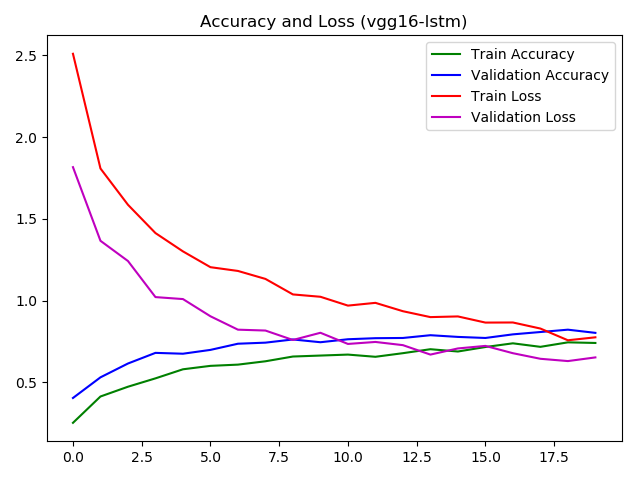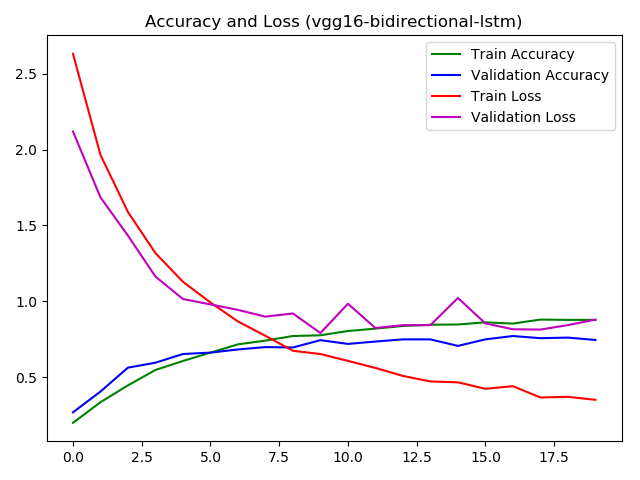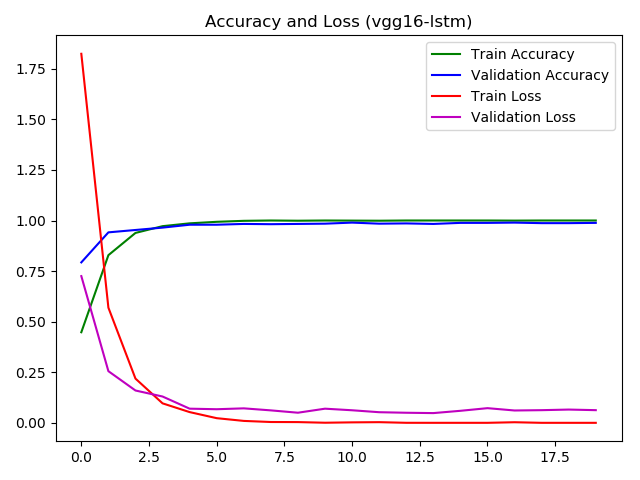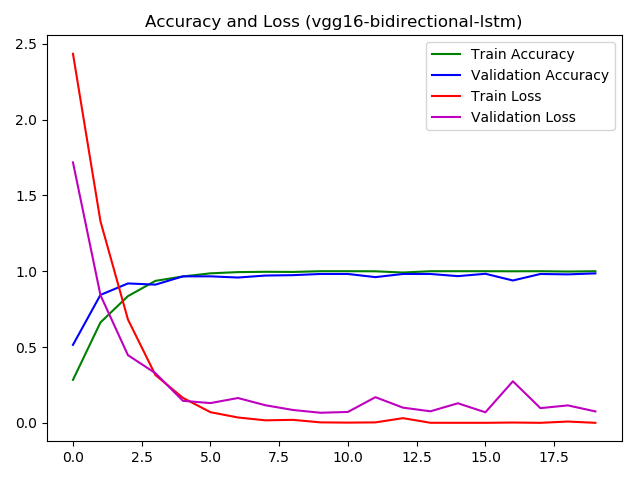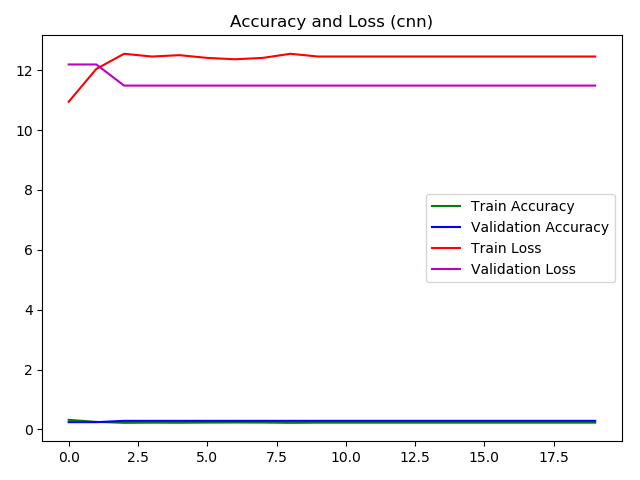chen0040 / Keras Video Classifier
Programming Languages
Projects that are alternatives of or similar to Keras Video Classifier
keras-video-classifier-web-api
Keras implementation of video classifiers serving as web
The training data is UCF101 - Action Recognition Data Set. Codes are included that will download the UCF101 if they do not exist (due to their large size) in the demo/very_large_data folder. The download utility codes can be found in keras_video_classifier/library/utility/ucf directory
The video classifiers are defined and implemented in the keras_video_classifier/library directory.
By default the classifiers are trained using video files inside the dataset "UCF-101" located in demo/very_large_data (the videos files will be downloaded if not exist during training). However, the classifiers are generic and can be used to train on any other datasets (just change the data_set_name parameter in its fit() method to other dataset name instead of UCF-101 will allow it to be trained on other video datasets)
The opencv-python is used to extract frames from the videos.
Deep Learning Models
The following deep learning models have been implemented and studied:
-
VGG16+LSTM: this approach uses VGG16 to extract features from individual frame of the video, the sequence of frame features are then taken into LSTM recurrent networks for classifier.
- training: demo/vgg16_lstm_train.py
- predictor: demo/vgg16_lstm_predict.py
- training: demo/vgg16_lstm_hi_dim_train.py (VGG16 top not included)
- predictor: demo/vgg16_lstm_hi_dim_predict.py (VGG16 top not included)
-
VGG16+Bidirectional LSTM: this approach uses VGG16 to extract features from individual frame of the video, the sequence of frame features are then taken into bidirectional LSTM recurrent networks for classifier.
- training: demo/vgg16_bidirectional_lstm_train.py
- predictor: demo/vgg16_bidirectional_lstm_predict.py
- training: demo/vgg16_bidirectional_lstm_hi_dim_train.py (VGG16 top not included)
- predictor: demo/vgg16_bidirectional_lstm_hi_dim_predict.py (VGG16 top not included)
-
Convolutional Network: this approach uses stores frames into the "channels" of input of the CNN which then classify the "image" (video frames stacked in the channels)
- training: demo/cnn_train.py
- predictor: demo/cnn_predict.py
The trained models are available in the demo/models/UCF-101 folder (Weight files of two of the trained model are not included as they are too big to upload, they are
- demo/models/UCF-101/vgg16-lstm-hi-dim-weights.h5
- demo/models/UCF-101/vgg16-bidirectional-lstm-hi-dim-weights.h5 )
Usage
Train Deep Learning model
To train a deep learning model, say VGG16BidirectionalLSTMVideoClassifier, run the following commands:
pip install -r requirements.txt
cd demo
python vgg16_bidirectional_lstm_train.py
The training code in vgg16_bidirectional_lstm_train.py is quite straightforward and illustrated below:
import numpy as np
from keras import backend as K
from keras_video_classifier.library.recurrent_networks import VGG16BidirectionalLSTMVideoClassifier
from keras_video_classifier.library.utility.plot_utils import plot_and_save_history
from keras_video_classifier.library.utility.ucf.UCF101_loader import load_ucf
K.set_image_dim_ordering('tf')
data_set_name = 'UCF-101'
input_dir_path = './very_large_data'
output_dir_path = './models/' + data_set_name
report_dir_path = './reports/' + data_set_name
np.random.seed(42)
# this line downloads the video files of UCF-101 dataset if they are not available in the very_large_data folder
load_ucf(input_dir_path)
classifier = VGG16BidirectionalLSTMVideoClassifier()
history = classifier.fit(data_dir_path=input_dir_path, model_dir_path=output_dir_path, data_set_name=data_set_name)
plot_and_save_history(history, VGG16BidirectionalLSTMVideoClassifier.model_name,
report_dir_path + '/' + VGG16BidirectionalLSTMVideoClassifier.model_name + '-history.png')
After the training is completed, the trained models will be saved as cf-v1-. in the demo/models.
Predict Video Class Label
To use the trained deep learning model to predict the class label of a video, you can use the following code:
import numpy as np
from keras_video_classifier.library.recurrent_networks import VGG16BidirectionalLSTMVideoClassifier
from keras_video_classifier.library.utility.ucf.UCF101_loader import load_ucf, scan_ucf_with_labels
vgg16_include_top = True
data_set_name = 'UCF-101'
data_dir_path = './very_large_data'
model_dir_path = './models/' + data_set_name
config_file_path = VGG16BidirectionalLSTMVideoClassifier.get_config_file_path(model_dir_path,
vgg16_include_top=vgg16_include_top)
weight_file_path = VGG16BidirectionalLSTMVideoClassifier.get_weight_file_path(model_dir_path,
vgg16_include_top=vgg16_include_top)
np.random.seed(42)
# this line downloads the video files of UCF-101 dataset if they are not available in the very_large_data folder
load_ucf(data_dir_path)
predictor = VGG16BidirectionalLSTMVideoClassifier()
predictor.load_model(config_file_path, weight_file_path)
# scan_ucf returns a dictionary object of (video_file_path, video_class_label) where video_file_path
# is the key and video_class_label is the value
videos = scan_ucf_with_labels(data_dir_path, [label for (label, label_index) in predictor.labels.items()])
video_file_path_list = np.array([file_path for file_path in videos.keys()])
np.random.shuffle(video_file_path_list)
correct_count = 0
count = 0
for video_file_path in video_file_path_list:
label = videos[video_file_path]
predicted_label = predictor.predict(video_file_path)
print('predicted: ' + predicted_label + ' actual: ' + label)
correct_count = correct_count + 1 if label == predicted_label else correct_count
count += 1
accuracy = correct_count / count
print('accuracy: ', accuracy)
Below shows the print out of demo/vgg16_bidirectional_lstm_predict.py towards the end of its execution:
predicted: Biking actual: Biking
accuracy: 0.8593481989708405
Extracting frames from video: ./very_large_data/UCF-101\Billiards\v_Billiards_g24_c01.avi
predicted: Billiards actual: Billiards
accuracy: 0.8595890410958904
Extracting frames from video: ./very_large_data/UCF-101\BabyCrawling\v_BabyCrawling_g22_c06.avi
predicted: BabyCrawling actual: BabyCrawling
accuracy: 0.8598290598290599
Extracting frames from video: ./very_large_data/UCF-101\Bowling\v_Bowling_g13_c01.avi
predicted: Bowling actual: Bowling
accuracy: 0.8600682593856656
Extracting frames from video: ./very_large_data/UCF-101\BalanceBeam\v_BalanceBeam_g24_c04.avi
predicted: BalanceBeam actual: BalanceBeam
accuracy: 0.8603066439522998
Extracting frames from video: ./very_large_data/UCF-101\BrushingTeeth\v_BrushingTeeth_g12_c02.avi
predicted: BrushingTeeth actual: BrushingTeeth
accuracy: 0.8605442176870748
Extracting frames from video: ./very_large_data/UCF-101\BasketballDunk\v_BasketballDunk_g04_c01.avi
predicted: BasketballDunk actual: BasketballDunk
accuracy: 0.8607809847198642
Extracting frames from video: ./very_large_data/UCF-101\Bowling\v_Bowling_g04_c03.avi
predicted: BenchPress actual: Bowling
accuracy: 0.8593220338983051
Extracting frames from video: ./very_large_data/UCF-101\BaseballPitch\v_BaseballPitch_g19_c01.avi
predicted: BaseballPitch actual: BaseballPitch
accuracy: 0.8595600676818951
Extracting frames from video: ./very_large_data/UCF-101\Archery\v_Archery_g18_c03.avi
predicted: Archery actual: Archery
accuracy: 0.8597972972972973
Extracting frames from video: ./very_large_data/UCF-101\Bowling\v_Bowling_g19_c03.avi
...
Evaluation
20 classes from UCF101 is used to train the video classifier. 20 epochs are set for the training
Evaluate VGG16+LSTM (top included for VGG16)
Below is the train history for the VGG16+LSTM (top included for VGG16):
The LSTM with VGG16 (top included) feature extractor: (accuracy around 68.9% for training and 55% for validation)
Evaluate VGG16+Bidirectional LSTM (top included for VGG16):
Below is the train history for the VGG16+Bidirectional LSTM (top included for VGG16):
The bidirectional LSTM with VGG16 (top included) feature extractor: (accuracy around 89% for training and 77% for validation)
Evaluate VGG16+LSTM (top not included for VGG16)
Below is the train history for the VGG16+LSTM (top not included for VGG16):
The LSTM with VGG16 (top not included)feature extractor: (accuracy around 100% for training and 98.83% for validation)
Evaluate VGG16+Bidirectional LSTM (top not included for VGG16)
Below is the train history for the VGG16+LSTM (top not included for VGG16):
The LSTM with VGG16 (top not included) feature extractor: (accuracy around 100% for training and 98.57% for validation)
Evaluate Convolutional Network
Below is the train history for the Convolutional Network:
The Convolutional Network: (accuracy around 22.73% for training and 28.75% for validation)
Note
Configure Keras to run on GPU on Windows
- Step 1: Change tensorflow to tensorflow-gpu in requirements.txt and install tensorflow-gpu
- Step 2: Download and install the CUDA® Toolkit 9.0 (Please note that currently CUDA® Toolkit 9.1 is not yet supported by tensorflow, therefore you should download CUDA® Toolkit 9.0)
- Step 3: Download and unzip the cuDNN 7.0.4 for [email protected] Toolkit 9.0 and add the bin folder of the unzipped directory to the $PATH of your Windows environment

